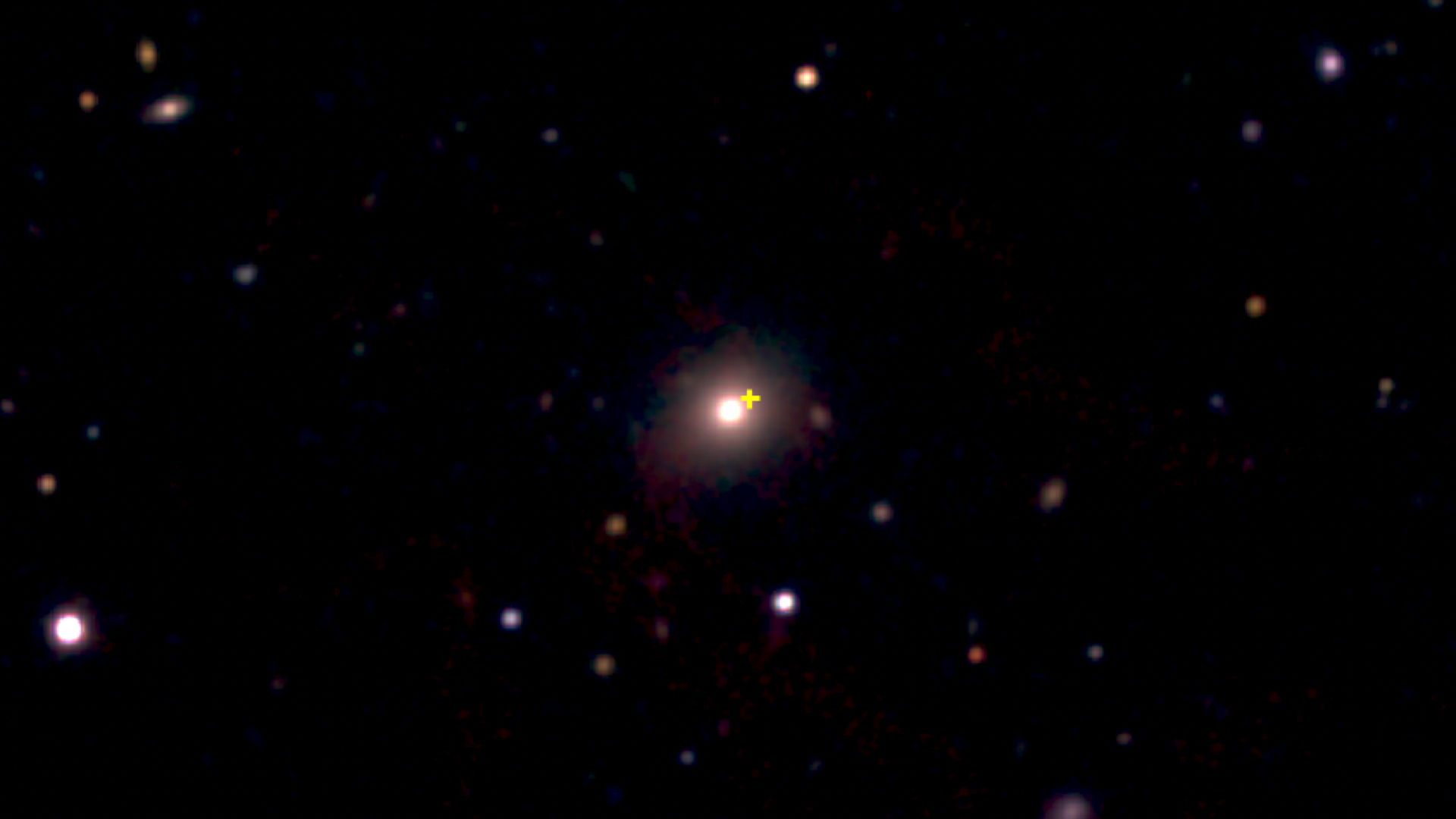Astronomers have discovered a mysterious new type of cosmic explosion that outshines nearly every supernova ever detected. Within 10 days, the peculiar blast grew brighter than 100 billion suns, then faded away to nearly nothing a few weeks later — a destructive event both briefer and more spectacular than a typical supernova.
The fast and furious event likely represents a new class of explosion never studied before, according to research published Sept. 1 in The Astrophysical Journal Letters.
“We have named this new class of sources ‘Luminous Fast Coolers’ or LFCs,” lead study author Matt Nicholl, an astrophysicist at Queen’s University Belfast said in a statement. “The exquisite data set that we have obtained rules out this being another supernova.”
Supernovas are bright explosions that occur when large stars (typically measuring at least eight times the mass of the sun) burn up their nuclear fuel, collapse in on themselves and blast their outer layers of gas into space. Every year, astronomers observe hundreds of supernovas suddenly brighten, then gradually dim. Typically, a supernova reaches peak brightness after about 20 days, shining several billion times brighter than the sun. Over the following months, the explosion slowly fades away.
But LFCs are not supernovas. For one thing, the newly discovered explosion — which astronomers detected with the Asteroid Terrestrial-Impact Last Alert System (ATLAS) telescope network in Hawaii, Chile and South Africa — occurred in a galaxy full of sun-like stars that are far too small to be supernova material.
Related: A messy black hole may have just triggered the largest explosion in the universe

“Our data showed that this event happened in a massive, red galaxy two billion light-years away,” study co-author Shubham Srivastav, a research fellow also at Queen’s University, said in the statement. “These galaxies contain billions of stars like our Sun, but they shouldn’t have any stars big enough to end up as a supernova.”
In addition to its unusual location, the newfound explosion also grew far brighter and faded far quicker than a typical supernova, according to the researchers. Within the next 15 days, the object had faded by two orders of magnitude, and had faded to only 1% of its peak brightness just one month after detonating.
Simply put, the explosion did not fit the profile of any known supernova. So, had anything like it ever occurred before? To find out, the researchers combed through archival telescope surveys, looking for objects with a similar brightness and lifespan. They ultimately uncovered two other objects — one from a 2009 survey, and the second from 2020 — with similar properties to the newly detected blast.
The team concluded that these blasts represent a new — and very rare — class of cosmic explosion that likely has nothing to do with dying stars. What exactly are LFCs, then? For now, the team can only speculate.
“The most plausible explanation seems to be a black hole colliding with a star,” Nicholl said.
However, even this explanation doesn’t quite fit; when black holes rip material away from passing stars in gruesome interactions known as tidal disruption events, they release bright X-ray emissions — and none of the LFCs identified here showed any X-ray emissions.
It could be that scientific models of star-on-black-hole collisions need to be refined — or, astronomers just don’t have enough information about LFCs to make any conclusions yet. The team will continue looking for more of these mysterious explosions in galaxies closer to Earth.
